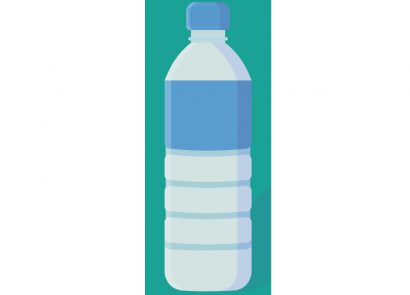How does vitamin D affect us?
“Vitamin D is a super vitamin, and we get great doses of it from exposure to sunlight,” says Dr Michael Barnish, UK medical director at Reviv Global. “The UVA and UVB rays hit our skin and convert a precursor of vitamin D into the vitamin – this is why vitamin D levels fall during the winter. This vitamin is essential for our immune system, brain function, bone health and can banish those general aches and pains that occur during the dark months. Plus, due to its action on brain function, it can lift mood and help ease the January blues. However, during the winter, most people in the UK will have a low vitamin D level. We should all, therefore, consider supplementing with this amazing vitamin to keep our bodies working optimally.
“Always take it following a meal for the best absorption. I would recommend a dose of 2500-5000 iu (international units) daily during the winter months for adults. Foods rich in the vitamin include mackerel, salmon and mushrooms, so add them to your diet. Mushrooms are interesting, as if you put them in sunlight for 15 seconds, they’ll double their vitamin D levels!
“Other ways to boost adequate vitamin D levels are to be out and about in the sunshine, even on a cold day. It’s also good to get fresh air in the body, and being outside can improve low mood.”
How does sunlight exposure impact our health?
Light can have a huge effect on our bodies, impacting our mood, productivity and even our mental health. “In addition to allowing us to see the world, light sends signals that regulate our internal systems,” says Dr Timothy Brown, an expert in light at the University of Manchester. “There are cells in the eye that produce a light-sensitive protein called melanopsin which is responsible for setting our body clock, influencing sleep and alertness, and regulating our hormone levels.” So, should we start tracking the hours we spend soaking up the sun’s rays? Not quite, as Tim explains. “There’s no simple answer to the question of how much light we need. Our biological systems work with the changes in illumination – lots of light during the day, very little light during the night.”
Do I need vitamin D supplementation?
Public Health England recommends the UK population takes a daily 10μg vitamin D dietary supplement in autumn and winter.
Going outside is a great way to top up low levels of vitamin D. Often referred to as the sunshine vitamin, it’s naturally produced by our skin when it’s exposed to sunlight. But what’s the big deal? “Studies carried out in eight countries, involving more than 26,000 adults aged 50 plus, found that those with the highest vitamin D levels were 57 percent less likely to die from any medical cause during the study durations than those with the lowest levels, underlining its importance,” explains Dr Sarah Brewer, medical director of Healthspan.
However, living in the UK makes us prone to a deficiency. “In northern climes, we simply don’t get enough natural sunlight during autumn and winter, so our vitamin D levels plummet. In addition, when the sun is shining, a sunscreen with a protection factor of SPF8 reduces vitamin D3 production in the skin by 95 percent. To balance adequate vitamin D production against skin cancer risk, the usual advice is to obtain 10-15 minutes of sun exposure to your face, arms, hands and back, without sunscreen, two or three times a week.”
Does wearing sunscreen affect my vitamin D intake?
In true British style, with the slightest glimpse of sunshine we’re outside, dressed in shorts and flip flops, desperate to catch a bronzed glow and that all-important dose of vitamin D. As our bodies are designed to get this vitamin by producing it when our bare skin is exposed to sunlight, it can be confusing to know how much is healthy without putting ourselves at increased risk of sun damage.
“Vitamin D has been proven to help us to absorb calcium, and is therefore essential for developing and maintaining healthy bones,” says Dr Stephanie Munn. “However, things start to get tricky when it comes to how much vitamin D we need. Although we all need approximately 10μg each day, lifestyle and skin type all affect how efficiently we produce the vitamin. So the process is as individual as the skin you’re in!
“The rate at which we produce the vitamin differs enormously. People with dark skin need more exposure to get the recommended amount compared to those with very pale skin, who are at greater risk of burning – something which must be avoided at all times. You’ll also need more exposure as you grow older.
“Use of sunscreen, the weather, time of day and a host of other factors means that it is tricky to gauge whether you’re getting your daily quota. If you’d like a more definite view of your vitamin D levels, you can get this checked with a simple blood test through your GP.”
Enjoy the sun, safely
Current guidelines say that between April and September we can make enough vitamin D from the sunshine to last us through the darker months. However, we all know the risks associated with too much sun exposure, so how do we get it right? It’s about taking a balanced approach. You don’t need to avoid the sun completely, but you do absolutely need to avoid burning. Being in the sun for a short amount of time between 11am and 3pm will give your vitamin D stocks a boost.
People with paler skin should aim for a short period in the sun every day for about 10-15 minutes while those with darker skin will need a little longer. During this time, aim to have a third of your skin surface exposed, focusing on less sensitive areas like the forearms, hands and legs. You will still absorb the necessary rays while wearing sunscreen, but you’ll need to stay out for longer.
What happens with a vitamin D deficiency?
We hear the term ‘vitamin D deficiency’ regularly, however true deficiency is unusual. One symptom is rickets, which can cause stunted growth and bones that break easily. However, we as a population are generally low in vitamin D. This means that over a long period of time you may experience muscle weakness, and you may feel fatigued. Be careful not to over-supplement though, as high doses can lead to vitamin D toxicity. While foods like oily fish, egg yolks, liver, and fortified foods such as cereals can help our bodies make vitamin D, it’s difficult to get enough through your diet alone, so a vitamin D supplement should be considered.
Dietary sources of vitamin D
Fatty fish: salmon
Salmon provides long-chain omega-3 fatty acids that have a functional role in our brains. “It is also an excellent source of vitamin D, which is known to play a part in mood regulation and memory,” nutritionist Dr Sarah Brewer tells us. “Populations with the highest intakes of oily fish have the lowest levels of depression. Oily fish consumption during pregnancy may also help to reduce the risk of dyslexia and autism in offspring.”
Eggs
Eggs are packed full of B vitamins, which can improve your brain function and, in turn, keep you on an even keel. “Eggs are also rich in vitamin D and omega-3 fatty acids, which have positive effects on your mood too,” says Sarah. “Plus, the high protein content improves satiety, helping to reduce food cravings and snacking.” Kick-start your day with eggs for breakfast to keep you full until lunch.
Dairy
In the past few years, dairy – and full-fat products in particular – have increasingly fallen out of fashion in favour of dairy-free or low-fat alternatives. But should you follow the crowd? “Like butter, full-fat dairy is a source of saturated fats and should be consumed in moderation,” says nutritionist Clarissa Lenherr from Bioniq. “Full-fat dairy provides us with fat-soluble nutrients A, D, E and K. These are best absorbed alongside fat, so you may be obtaining more nutrients by eating the full-fat option. Additionally, low-fat dairy products tend to be filled with added ingredients, which can include sugar, artificial sweeteners, thickeners and fillers.”



















